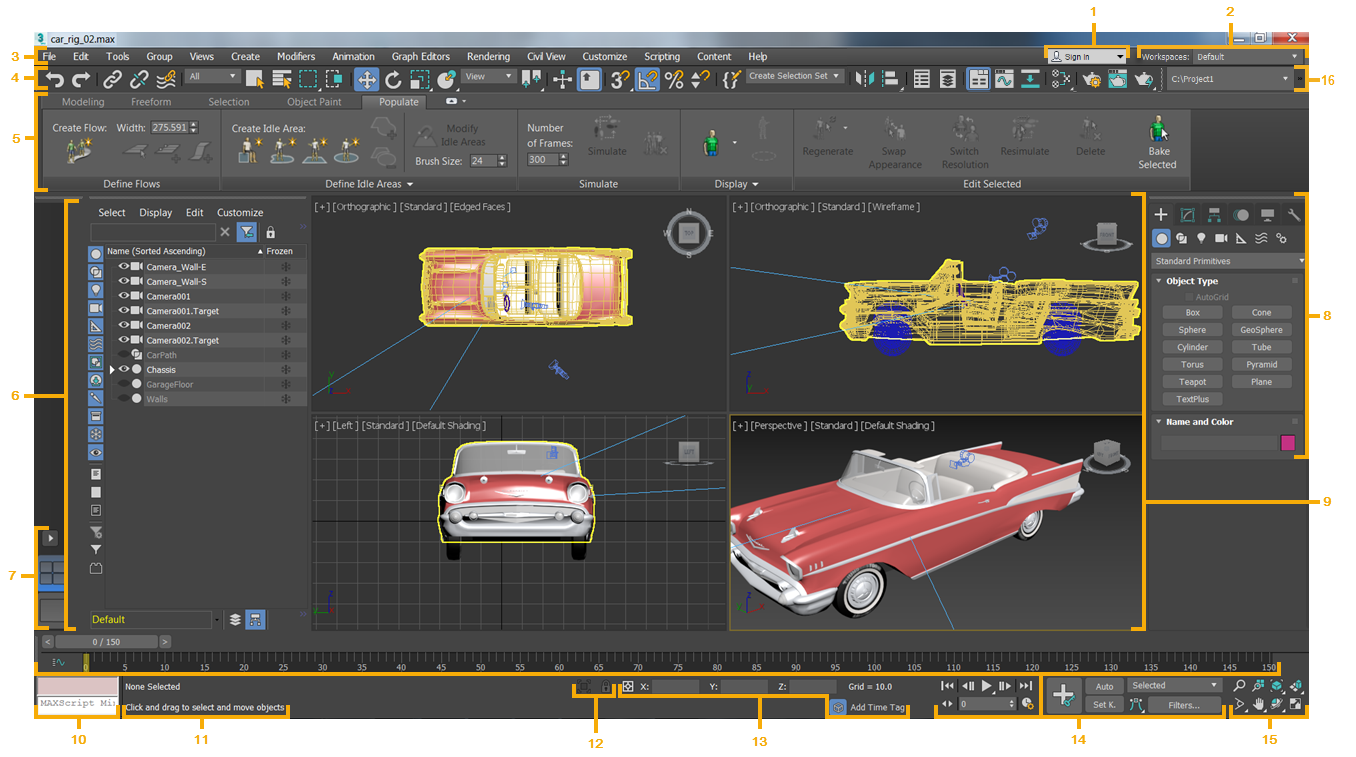The 3ds Max interface comprises controls, status information, and viewports, where you work and view your scene.
One of the most important aspect of using
3ds Max is its versatility. Many program functions are available from multiple interface elements. For example, you can open Track View for animation control from the Main toolbar as well as the Graph Editors menu, but the easiest way to get to a specific object's track in Track View is to right-click the object and then choose Track View Selected from the Quad menu.
Tip: Type
X in an empty area of the Viewport to open the
Search dialog, which lets you type in the name of a tool or action to quickly locate functions.
You can customize the user interface in a variety of ways: by adding keyboard shortcuts, moving toolbars and command panels around, creating new toolbars and buttons, and even recording scripts into toolbar buttons.
The user interface is high DPI aware, and ensures that you have the optimal experience with your display hardware.
Note: Some images of the user interface (icons, toolbars, etc.) found within 3ds Max Help may be of older versions of the software.

- User Account menu
- Workspace selector
- Menu bar
- Main toolbar
- Ribbon
- Scene Explorer
- Viewport Layouts
- Command panel
- Viewports
- MAXScript Mini Listener
- Status line and Prompt line
- Isolate Selection toggleand Selection Lock toggle
- Coordinate display
- Animation and Time controls
- Viewport Navigation controls
- Projects toolbar

 Log into your Autodesk account to manage your license or purchase Autodesk products. Trial versions also show how many days are left.
Log into your Autodesk account to manage your license or purchase Autodesk products. Trial versions also show how many days are left.